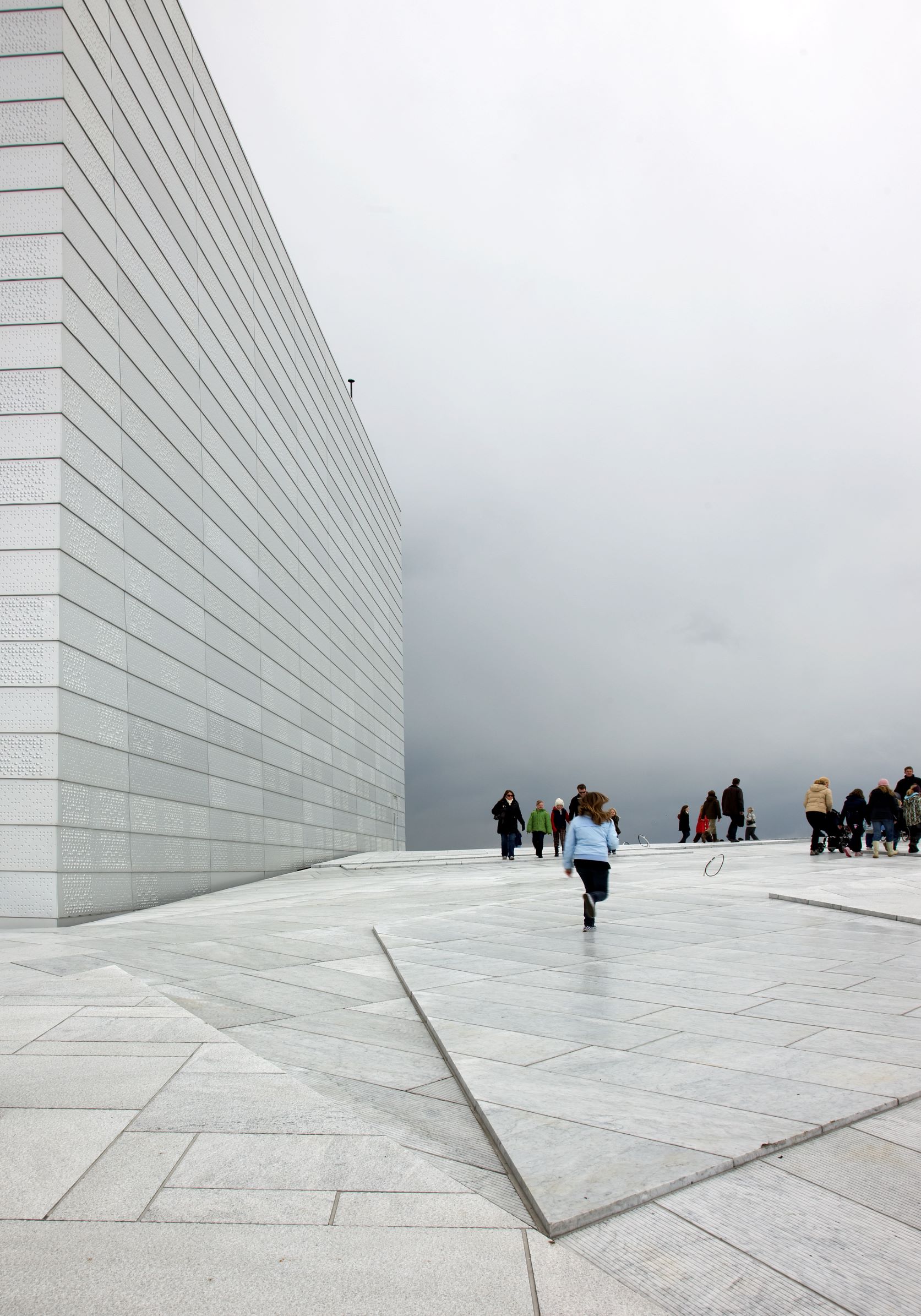
Phaidon Introductions: Snøhetta on the backstories it creates
The world-famous practice explains why, when it comes to creating great buildings, narrative comes first
Though it may make sleek, beautiful, contemporary buildings, Snøhetta doesn’t necessarily believe less is more. The international architecture practice, founded in Norway three decades ago, actually believes in investigating minute, narrative details within its briefs, in order to develop and guide the projects. Here’s how the practice puts it, in the opening pages of the new Phaidon book, Snøhetta: Collective Intuition.
“Consider the journey of a theatergoer. She begins in the curving streets of the city, navigating paths paved in asphalt and cobblestone. Sunlight glints off glazed buildings; streetcar cables crisscross overhead. As she nears the fjord, the waterfront announces itself with a salty ocean breeze. She traverses a slender, walled footbridge to leave behind the bustling city, and once across, she finds herself immersed in the bone-white expanse of a marble plaza. The clamor of urban life gives way to the faint sound of waves lapping at the edge of the stone where it plunges into the fjord.
“As she turns away from the water’s edge, the plaza opens around her. Ahead, golden light emanates from within a sloping glass atrium. She passes around it, her steps eventually leading her up and over the roof to the building’s highest point. Many others join her on this loose procession to the summit: strolling couples, dog walkers, selfie-taking tourists, solitary contemplators of the Oslo skyline and forested islands beyond. Together they animate the roof, painting ribbons of movement on an otherwise blank canvas.
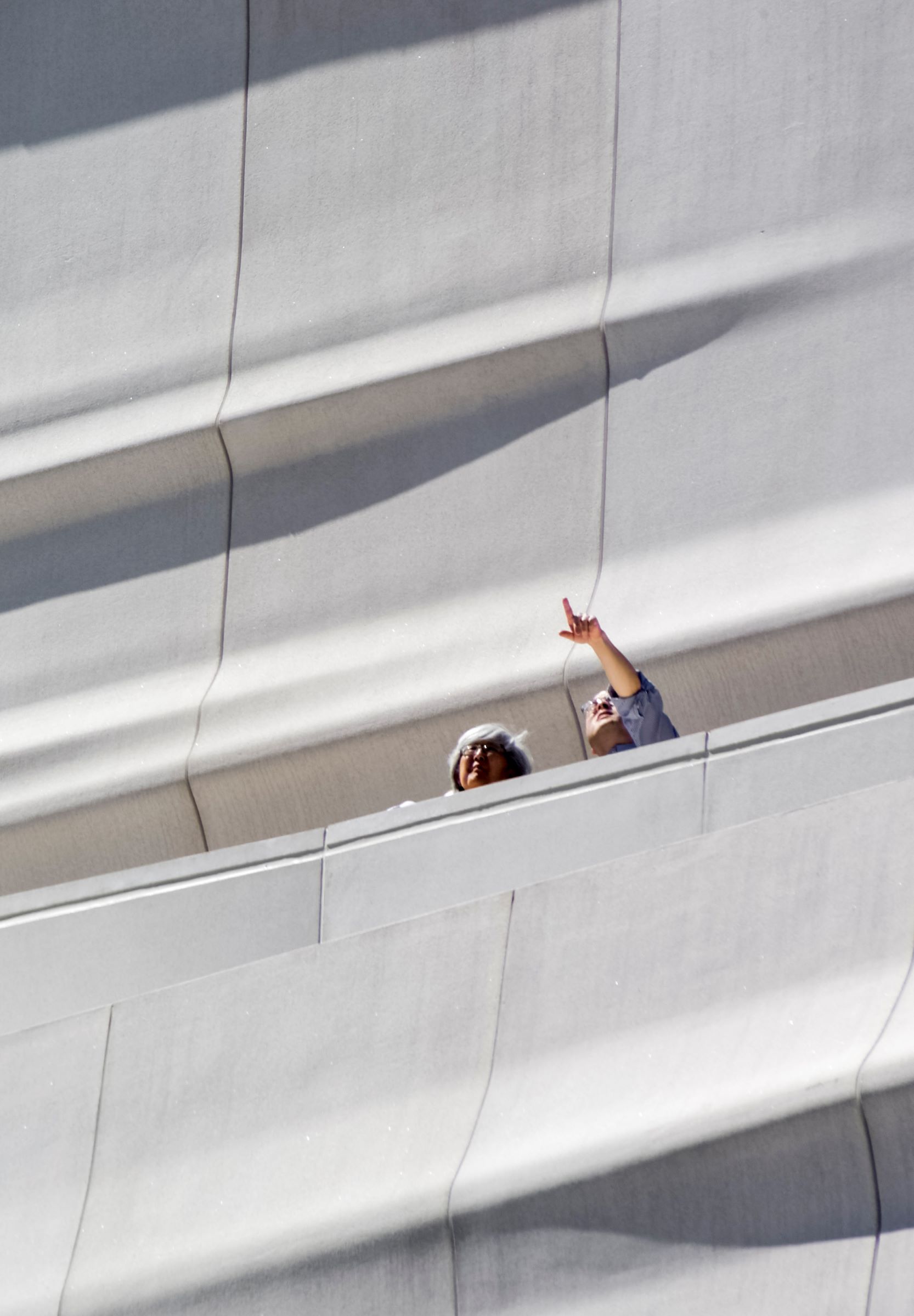
“Somewhere along her journey, the landscape has shifted from the familiar to the unexpected. In the realm of the Opera House, that which comprises the familiar texture of cities—the solids and voids, verticals and horizontals, doors and windows—become angled, skewed, and subverted, hinting at what is to come once inside the performance hall.
“Descending from the roof, she slips through the compressed entrance into the building’s spacious atrium. The white expanse of the plaza transitions to become the lobby floor, accented by the tactile warmth of wood and subtle, rhythmic hues of green light coloring the lobby walls. Despite the grand height of the space, conversations are muted to a low murmur. She edges alongside the timber-clad spiral that encloses the main performance hall, letting her fingers run along the oak panels. Ushered through a small opening into the auditorium, she settles into her seat. The half-light of the chandelier veils the room as she traces the radiant lines of the spotlights until her gaze rests on the silvery glimmer of the stage curtain. At last, a bell sounds, the chandelier dims, the curtain parts, and yet another world unfolds.
“When we set out to design a project, we frequently think in terms of what experiences we might create and how those might be sequenced over time. We talk about creating a path or journey. Often these journeys, like those in fairytales, have a transformative power, potentially transporting a person to otherworldly landscapes, where thresholds must be crossed and tasks performed in order to reach some ultimate destination or achieve some worthy goal. Advancing through moments of trial, defeat, surprise, and discovery toward eventual triumph, one finally cracks the code, breaks the spell to unearth the buried treasure, slay the dragon, or return home with the troll’s head.
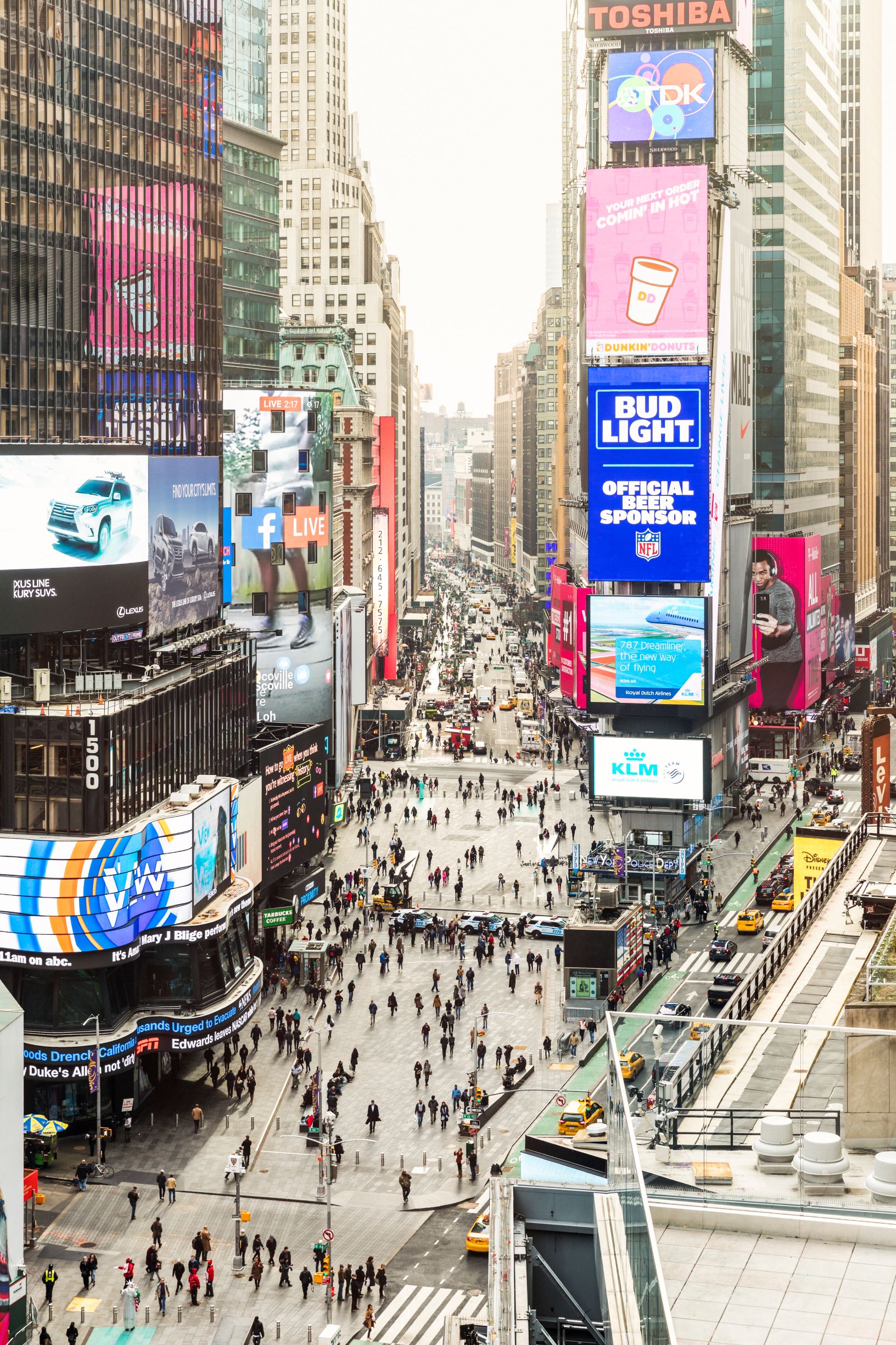
“This journey may be literal, a pilgrimage of sorts requiring physical exertion and endurance; or it may be metaphorical, an endeavor of the imagination. But either way, the success of such a journey relies on the suspension of disbelief. Cultivated in childhood, this willingness to put aside our skepticism and immerse ourselves in a grand fiction is at the core not only of opera or theater, but also of every kind of artistic and design endeavor. It is this confidence in design as being capable of taking us on a journey that underpins the spaces and experiences that we aim to create through our practice.
“In researching our design for the Times Square pedestrian plazas, studies of daily and seasonal circulation revealed intuitive patterns of movement throughout the space. It also revealed a dearth of places where people could potentially escape the bustle to stop and linger. To adjust these natural patterns, we discreetly arranged ten 50-foot (15-meter) -long granite benches to shepherd faster-moving foot traffic to the outside edges of the plazas while creating spaces for rest on the plazas' interiors. By virtue of the open and compressed spaces they create, the benches organize the 13 plazas, but with a strategy that implies rather than dictates how people interact with this dense and complex urban public space. Follow-up studies show that more people visit the revitalized Times Square than before; they also stayed longer and have reported having a more enjoyable and relaxed experience.
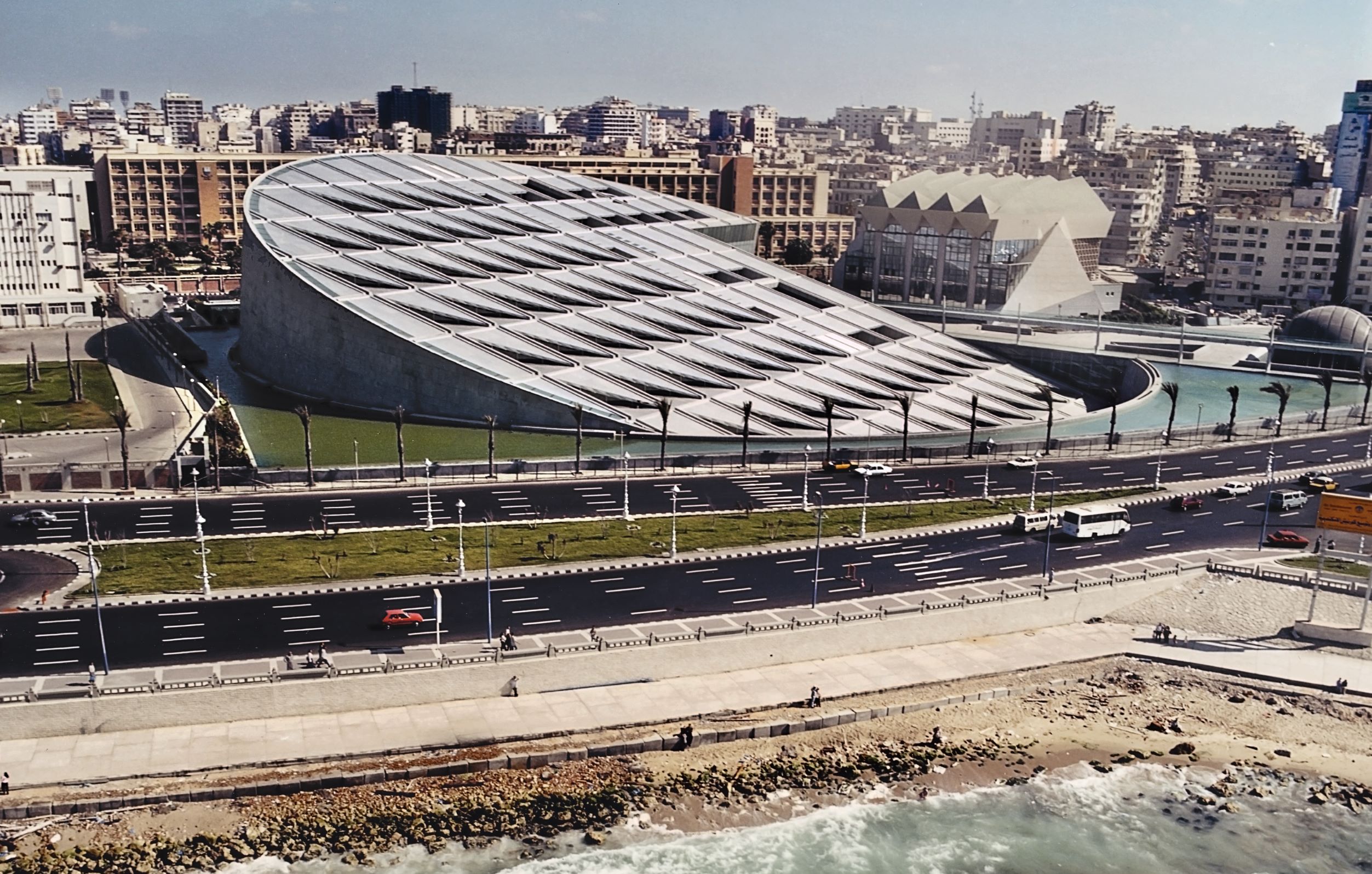
“Whereas others might consider the opening of a new project to be a moment of closure, we see it as another point of departure, when all of our hopeful ambitions for the project give way to new, evolving, and often surprising narratives and patterns of use. We could not have anticipated, for example, that people would choose to ski down the sloping roof of the Oslo Opera House or that it would become Oslo’s most popular destination for tai chi, or that Ryerson students would seize on the unprogrammed social spaces of the Learning Centre as sites for break-dancing practice and informal concerts. But we consider it our great success to have created places where people feel comfortable and free to improvise.
“In 2019, the year of this book’s publication, Snøhetta turns thirty, about the same age as the studio’s founders when we won the Bibliotheca Alexandrina (new Library of Alexandria) competition in 1989. Shortly after our design was selected, we were asked to present it to dignitaries and diplomats from around the world in the hope that they would deem it worthy of investment. Despite our young age and inexperience, the meeting was successful. This catapulted us into an unscripted journey of piecing together the complexities of an international project while establishing an international practice.
“We learned many things in the three decades that followed. Stories of the use and perception of our work have returned to us as guidance and inspiration. This was the case with the Alexandria library itself, when we witnessed a profound demonstration of collective ownership by those who joined hands around the building and public plaza to protect their functional and symbolic value from being defaced by protesters. This group protected not only the architecture per se but, more importantly, the civic and social mainstay the library had become. When a place designed for social equity and democratic values empowers public agency far beyond anything we could have anticipated, we are reminded of just how deeply affecting and transformative design can be.
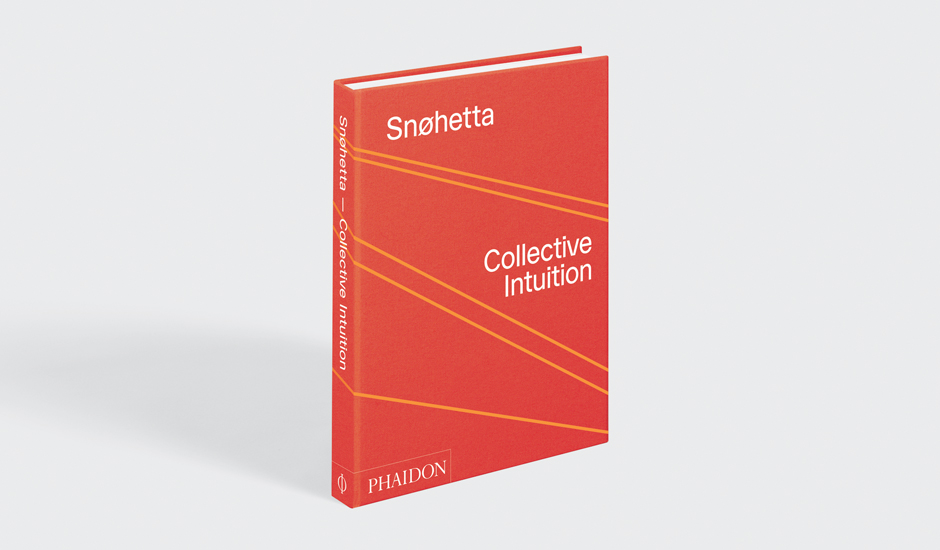
“These stories also remind us to be what we do—that is, to continue to mirror the core tenets of our work in the core practices of our studio. In shaping the ethic and philosophies of our studio, we have tried to instill in our design process the same generosity of spirit, sense of shared ownership, and love for creative exploration that we aspire to provide all those who use the spaces we create. So while notions of habitat, language, Nudge Theory, invention, and transpositioning are invaluable tools and methods within that process, it is Snøhetta itself—this diverse group of people who work together to create spaces of powerful narratives and experiences—that is the core of what we do. To cultivate this will continue to be our central and most challenging project.”
For more on this innovative architectural practice, order a copy of Snøhetta: Collective Intuition here. The book showcases 24 exceptional projects - including the 9/11 Memorial & Museum Pavilion and the Oslo Opera House, illustrating Snøhetta's boundary-pushing and highly collaborative approach to design.